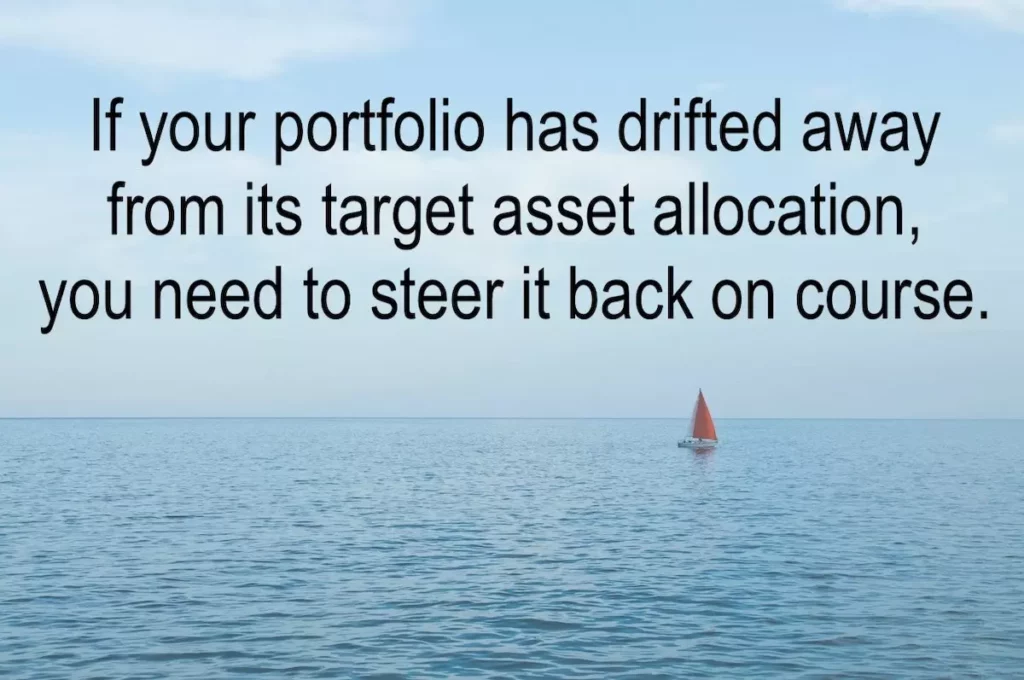Rebalancing is the process of restoring the asset mix in an investment portfolio to its original allocation and risk-return profile. It’s an essential part of ongoing portfolio management as it helps to mitigate risk.
If you haven’t watched the 2015 film “The Walk” starring Joseph Gordon-Levitt, you gotta watch it! It tells the true story of French high-wire artist Philippe Petit’s walk between the Twin Towers of the World Trade Center on 7th August 1974. The 24-year-old’s heart-stopping performance lasted 45 minutes, during which he walked back and forth between the towers eight times, danced, knelt down and lay flat on the wire — 400 metres (1,312 feet) above the ground without a safety harness!
Petit’s spectacular coup was the culmination of six years of meticulous planning and preparation. His hard work paid off and history was made that day. He was poetry in motion. The strong winds had no impact on him, for he had the perfect balance and fluidity of a graceful flamingo.
In some ways, investing is a high-wire act. To be successful, you need to plan and keep your balance. You need to plan your asset allocation and take steps to ensure that your portfolio is properly balanced.
This article explains what rebalancing is, as well as why and how to rebalance your investment portfolio.
- What is Rebalancing?
- Why Do You Need to Rebalance Your Portfolio?
- How Do You Rebalance Your Portfolio?
1. What is Rebalancing?
Long-term investing is not random. To increase your chances of success, planning is key and a vital part of planning is to decide on your asset allocation, i.e. the weighting of each asset class in your portfolio. There are a few factors to consider, namely your financial goals, risk tolerance and time horizon. Ultimately, it’s about curating a diversified portfolio with a risk-return profile that suits your needs.
So what happens after you have determined your asset allocation? Well, you can’t leave your portfolio unattended, that’s for sure. Like a house or car, your portfolio needs routine “maintenance” or rebalancing.
Rebalancing is the process of readjusting the asset mix in a portfolio to maintain its target allocation. An integral part of portfolio management, it requires you to buy and sell portions of your portfolio so that the weighting of each asset class goes back to its original, desired level — the level you’re most comfortable with, based on your tolerance for risk and desire for reward.
For instance, Mr Wow and I have an asset allocation of 60% stocks, 25% bonds and 15% cash (read The Retirement Bucket Strategy Demystified to find out more). However, market movements and differing returns can cause our allocation to shift, so we make it a point to monitor our portfolio regularly and rebalance if necessary.
Note: Rebalancing is not a one-time activity, but an ongoing process of monitoring and adjusting your portfolio when required.
2. Why Do You Need to Rebalance Your Portfolio?
Here are three reasons why you need to make rebalancing your portfolio a priority:
It’s a Way to Manage Risk
For the most part, rebalancing is an effective risk management strategy. Let’s say you have a low appetite for risk, so you constructed a portfolio that comprises 50% stocks and 50% bonds. Even if you do not make any changes to your investments, your portfolio will deviate from its original allocation in favour of better-performing assets over time. You may find yourself overweighted in a particular asset class. Instead of a 50:50 mix, you may have 60% stocks and 40% bonds. This exposes you to more risk and you’re not comfortable with it.
Even if you do not make any changes to your investments, your portfolio will deviate from its original allocation in favour of better-performing assets over time.
The solution is to rebalance by selling 10% of your stock holdings and buying bonds with the money. This helps to control risk by ensuring that certain assets are not over or under represented in your portfolio. It keeps your portfolio diversified and can go a long way in protecting your investments.
The bottom line is, if your portfolio has drifted away from its target asset allocation, you need to steer it back on course. If you ignore the changes and let it evolve into something substantially different, you may be exposing yourself to more risk than you can stomach.

Check out: Portfolio Diversification: Understanding its Pros and Cons
It’s a Way to Buy Low and Sell High
Assuming your stocks are doing well and your portfolio is burgeoning. It can be tempting to “stretch” your risk tolerance and put rebalancing on hold. Why not ride the wave a little longer, right?
Nevertheless, price fluctuations can happen in either direction. If you’re too heavily weighted on equities, would you panic and do something stupid (e.g. sell stocks at a loss) when the market takes a nosedive? Put it this way, if you don’t rebalance your portfolio, the market WILL do it for you and you may not like the outcome.

When you come to think of it, rebalancing provides the opportunity to take advantage of market swings by selling high and buying low. That’s right. When you sell high-performing assets, you’re essentially realising your profit. And when you reinvest the profit by buying assets that are under-performing, you’re effectively picking up bargains. Awesome!
Rebalancing provides the opportunity to take advantage of market swings by selling high and buying low.
But do note that rebalancing is not about market-timing. Its main purpose is not to maximise returns although there will be opportunities to buy low and sell high.
Check out: Investing during a Recession: What You Need to Know
It’s a Way to Stay in Sync with Your Goals
Importantly, rebalancing keeps your portfolio in line with your long-term goals. It helps you stay focused and ensures that you’re maintaining the desired asset allocation that’s required to achieve your goals.
Of course, your goals and investment strategy may change over the years. Certain life events may also affect your ability or willingness to take risks. When that happens, you can always devise a new allocation and rebalance accordingly. For example, a sudden windfall will most likely have an impact your investment strategy. Depending on the size of the windfall, you may choose to take a more conservative approach and invest in mainly low-risk assets for greater peace of mind. Another person may do the exact opposite.

3. How Do You Rebalance Your Portfolio?
There are many ways to rebalance a portfolio, but since this article is meant for beginners, I’ll just touch on the two most commonly used methods. One is based on time interval, while another is based on allocation threshold:
Time Interval Method
This method of rebalancing requires you to periodically readjust your portfolio to its original allocation. It could be done quarterly, semi-annually, or annually, depending on your outlook and goals. This is a simple and straightforward approach to rebalancing, so there’s minimal effort on your part.
However, it should be pointed out that frequent rebalancing comes at the cost of additional transactional fees, which will erode your returns. So please DO NOT rebalance every week or month and rack up unnecessary costs! Many long-term investors rebalance just once a year.
Frequent rebalancing comes at the cost of additional transactional fees, which will erode your returns.
Allocation Threshold Method
This method of rebalancing uses predetermined levels or threshold to indicate when a portfolio should be rebalanced. For instance, you could set a threshold of 5 percentage points for each asset class and if the weighting of a particular asset class shifts above or below that level, it’s time to do some rebalancing.
Mr Wow and I use this method as we want to have more control over our risk level and asset allocation. Instead of following a fixed schedule, we allow our portfolio to drift slightly and only rebalance it when it’s off target by 5 percentage points or more. Compared to time interval rebalancing, this method requires us to actively monitor our portfolio. We don’t mind it at all as we’re early retirees with time on our hands. Also, we do enjoy reviewing our portfolio and strategising our next move.
Mr Wow and I allow our portfolio to drift slightly and only rebalance it when it’s off target by 5 percentage points or more.
Check out: How We Achieved Financial Independence Retire Early in 7 Years and Unlock Your Future: 5 Reasons to Plan for Early Retirement
To sum up, rebalancing plays a pivotal role in ongoing portfolio management. It makes sure that the overall risk of the portfolio doesn’t go out of whack, presents you with opportunities to buy low and sell high, and keeps your portfolio in sync with your long-term goals. It is recommended that you rebalance your portfolio at least once a year.
So do you rebalance? Do leave us a comment.
You may also like: Yearly Financial Health Checklist | The Importance of Liquidity in Personal Finance and Investing

